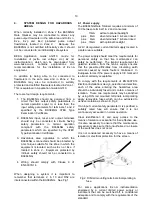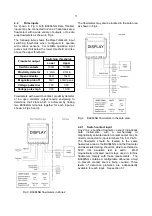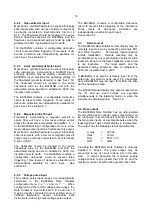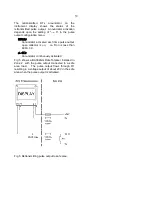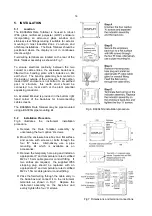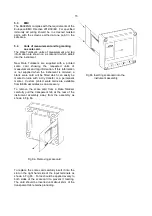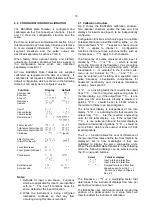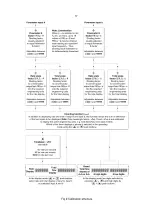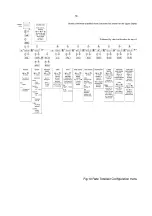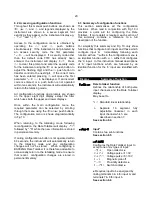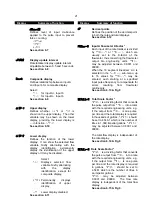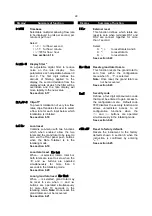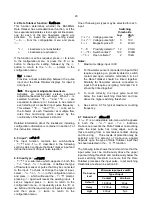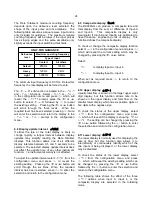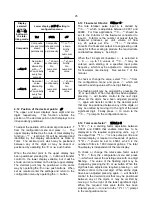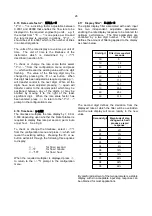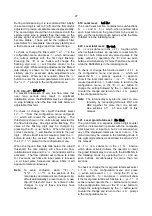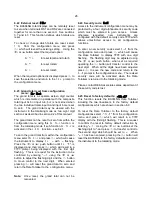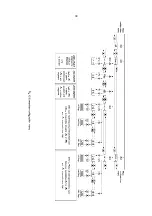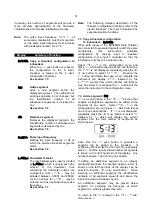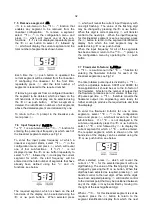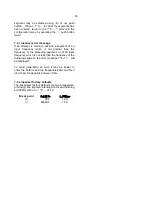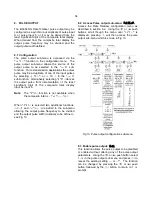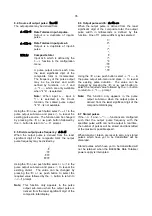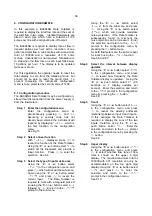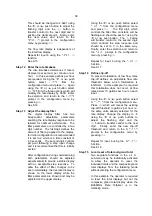
24
The Rate Totaliser’s maximum counting frequency
depends upon the debounce level selected, the
shape of the input pulse and its amplitude. The
following table assumes a square wave input and is
only included for guidance. The maximum reliable
counting frequency will be lower if the input pulses
have sloping edges and the pulse amplitude only
slightly exceeds the input switching thresholds.
ONLY FOR GUIDANCE
De-bounce
level
Maximum operating frequency
Type of input
Contact
All others
Default
250Hz
12kHz
Heavy
120Hz
2kHz
Light
1,000Hz
100kHz
The minimum input frequency is 0.01Hz. Below this
frequency the rate display will be forced to zero.
The
dEbouncE
sub-function is located in the
inPut-A
and
input-b
functions. Select
inPut-A
or
input-b
in the configuration menu and press
(
which will
reveal the
inP
.
tYPE
prompt, press the
&
or
*
button to select
dEbouncE
followed by
(
to reveal
the existing setting. Pressing the
&
or
*
button
will scroll through the three levels. When the
required level has been selected, pressing
)
twice
will enter the selection and return the display to the
inPut-A
or
input-b
prompt in the configuration
menu.
6.8 Display update interval:
uPdAtE
If either the rate or the total display is likely to
change rapidly, a longer interval between display
updates may simplify reading the Rate Totaliser
displays. This function allows one of six different
display intervals between 0.5 and 5 seconds to be
selected. The selected display update interval does
not affect the update time of any other instrument
function. i.e. instrument accuracy is not affected.
To adjust the update interval select
uPdAtE
from the
configuration menu and press
(
to reveal the
existing setting. Pressing the
&
or
*
button will
scroll through the six times. When the required
interval has been selected, press
)
to enter the
selection and return to the configuration menu.
6.9 Composite display:
Count
The BA384NG can produce a composite rate and
total display from the sum or difference of Input-A
and Input-b. This composite display is only
meaningful if Input-A and Input-b are calibrated to
have the same engineering units of display. This
function defines the composite display.
To check or change the composite display function
select
Count
in the configuration menu and press
(
which will reveal the current setting which may be
changed by pressing the
&
or
*
button.
Select:
A
:
b
to display Input A + Input b
A
:
-b
to display Input A – Input b
When set as required press
)
to return to the
configuration menu.
6.10 Upper display:
di5P-1
Usually total flow is shown on the larger upper eight
digit display, but this function allows rate to be
shown on the upper display and total flow on the
smaller lower display which has six positive digits or
five digits with a negative sign.
To check the status of the upper display, select
di5P-1
from the configuration menu and press
(
which will reveal if the display is showing
rAtE
or
totAL
. The setting can be changed by pressing the
&
or
*
button followed by the
)
button to enter
the selection and return to the configuration menu.
6.11 Lower display:
di5P-2
The lower display is normally used for displaying the
rate of flow, but this function also allows it to
intermittently or continuously identify which of the
two inputs is being displayed, or the lower display
may be disabled.
To check the status of the lower display, select
dI5P-2
from the configuration menu and press
(
which will reveal the existing setting which can
be changed by pressing the
&
or
*
button
followed by the
)
button to enter the selection and
return to the configuration menu.
The following table shows the effect of the three
di5P-2
options when input A, input b or the
composite display are selected in the totalising
mode.

